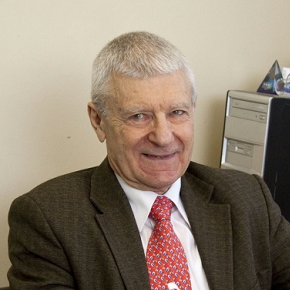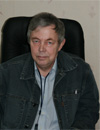 |
||
|
North Korea idle war machine RIA Novosti, Konstantin Bogdanov, PUBLISHED December 25, 2011 News of the death of Kim Jong-il was accompanied by conspicuous muscle flexing by the North Korean military. The “Dear Leader” left behind an enormous war machine, the maintenance of which consumes the bulk of the country’s daily activities. How does this machine work and what does the future hold for it? Backbone of the state The Korean People's Army is the backbone of the North Korean state. In fact, it is the state’s raison d’etre. It is an army of over one million soldiers heavily armed with outdated weapons. It stands guard over what we “civilized” people consider an infernal regime. Experts estimate that about half of the country’s economic resources go to defense, not to mention the much larger intellectual resources that military consumes. The national economy is tiny, with GDP estimated at between 2% to 4% of South Korea’s. North Korea has been preparing for a new war for almost 60 years. It is like an army of ants that persistently and meticulously builds a colony in a place with scant resources. No one but North Korea expects a new war to break out, but that does not deter the war machine. Cheap repairs of cheap weapons The defense industry is probably Pyongyang’s greatest assets, not because of its fantastic success but because the rest of North Korean’s output does not reach even this low level. North Korea has achieved surprising success in its military economy, considering its anemic production capabilities, lack of natural resources (including oil and gas) and decent natural science and engineering schools, and the de facto international blockade that impedes the inflow of modern technology. A monstrous imbalance in the distribution of material and labor resources is the price the country has paid for this relative success. The entire country is built to serve the needs of the military-industrial complex and national defense. North Korea has more or less managed to equip its army with small arms and ammunition, as well as with artillery, including long-range systems. It is also producing armor. Experts believe its new tank, the Pokpung-ho or Storm Tiger, is a rather successful clone of the Soviet Union’s T-72 and can compete with upgraded modern counterparts from the same family. However, considering the massive size of the army, North Korea cannot quickly reequip it with new hardware of its own make because its industry cannot cope with such a burden. It is also very short on fuel and lubricants, rendering its hardware useless. The aircraft manufacturing industry is in even worse shape. Having more or less mastered the maintenance old Soviet and Chinese aircraft (MiG-19 and MiG-21, and their Chinese clone MiG-23 P/ML), the North Korean defense industry is still incapable of producing modern aircraft. The high-water mark remains the assembly of Mig-29 fighters (30 9-12B and 9-13 versions) from kits supplied by the Soviet Union in the late 1980s. These engineering capabilities now underpin the country’s most combat capable air units equipped with MiG-29s and Su-25 assault aircraft. North Korea’s nuclear and missile complex is a separate matter. It receives the best of what the country has to offer in terms of both research and production. The Bomb North Korea has surpassed itself in building its nuclear missile shield as compared with its outstanding military industrial achievements. North Korea is a nuclear power, albeit a young one. It became one almost against its will; Pyongyang was backed into a corner. It is hard to say whether North Korea has managed to create delivery vehicles for its nuclear devices (tested in 2006 and 2009 and, probably, even in 2004), or simply put, whether it possesses ballistic missiles equipped with nuclear warheads – the most dangerous form of nuclear weapon. North Korea has missiles and, despite strict international expert controls, has even disseminated “illegal” missile technology to Iran and possibly Pakistan. These missiles are not yet up to the mark but perform better and better with each passing year. As distinct from Tehran, which is far removed from its enemies, Pyongyang’s enemies are close by: South Korea is its next door neighbor and another possible target, Japan, is not far away, either. This dilapidated scientific, technical and production pyramid built on the foundation of a backward economy serves only one goal – in the worst case scenario, this teetering, Cyclopean edifice will collapse, burying as many neighbors as possible under its ruins. Walking in shrinking circles Obviously, an open conflict on the Korean Peninsula is not in anyone’s interests. Several generations of politicians in both Koreas have become accustomed to the fragile status quo – neither peace nor war, but military buildup. Others have managed to eke out a profit from the status quo, and so nobody is eager to replace the dilapidating structure. However, since the late 1990s, striking changes have taken place in North Korea under the strain of years of famine. Some experts are even cautiously talking about the beginning of a spontaneous transition to elements of a market economy. However, the elites in the North continue to oil their rapidly rusting system, while their southern neighbors are in no rush to help them, which is easy to understand – in the early 2000s, even optimistic experts estimated the direct costs of reintegrating the North into the economy of the South at least at $1.5 trillion. At that time, this was equal to about two of South Korea’s GDPs; an astronomical amount even during a period of economic growth. So, both sides’ armies are doing well. They continue to play their traditional roles and demand huge fees in return, which is a heavy burden on both parts of the Korean people. Other news: Belarus agrees to Russian building of nuclear station Belarus has already started working on the site, Lukashenko said. Russia launches fourth unit at Kalinin Nuclear Power Plant Unit went online on Monday. Russian specialists embark on construction of Vietnamese nuke plant Our Vietnamese partners on December 1 issued a document agreeing the beginning of work. |
Hero of the day 
Georgy Toshinsky: Booming as a Driving Force to Trade (Reactors?) Not quite so. The authors of the concept, which was difficult to be realized in practice, turned to a clearer concept of a standing wave reactor (TP-1) that in principle allows finding the solution to the tasks stated for TWRs. INTERVIEW
Alexander Chistozvonov OPINION
Vessela Vaneva Last news:
|
Licence Р В Р’ВВВВВВВВВВВВВВВР В Р’В» РІвРРРвЂв„ССвР ‚єР В Р’ Р’ РІР‚™Р’ Р В Р вЂ Р В РІР‚љРІвЂћСћР В РІР‚™Р’ Р В РІР‚™Р’ Р Р†Р вЂљРЎв„ўР В Р Р‹Р Р†Р вЂљРЎвЂќР В Р’ Р вЂ Р В РІР‚љРІР‚њР В Р’¤РВРвЂв„РРРВВ  В Р’ РІР‚№Р В Р Р‹Р Р†Р вЂљРЎвЂќР В Р’ Р’ Р’ Р’ РІР‚™Р’ Р В Р’ Р’В Р В РІР‚в„–77-30792. ATOMINFO™ trademark.

